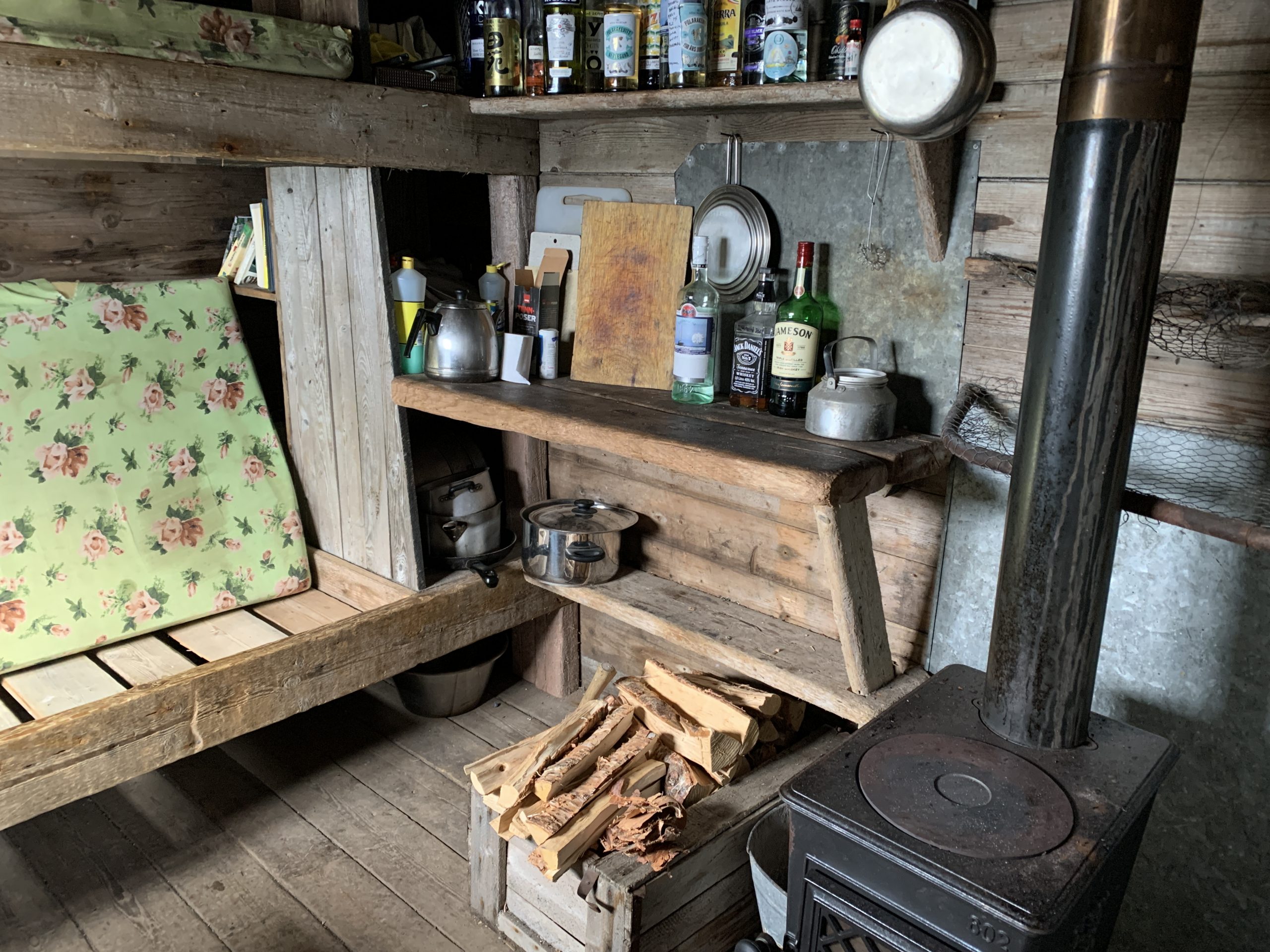Although the landscape seems barren, there are signs of life: polar bear footprints, nesting birds and even “Texas Bar”.
Today, we explore another fjord, this time leaving the zodiacs behind on shore and going for a two-hour hike.
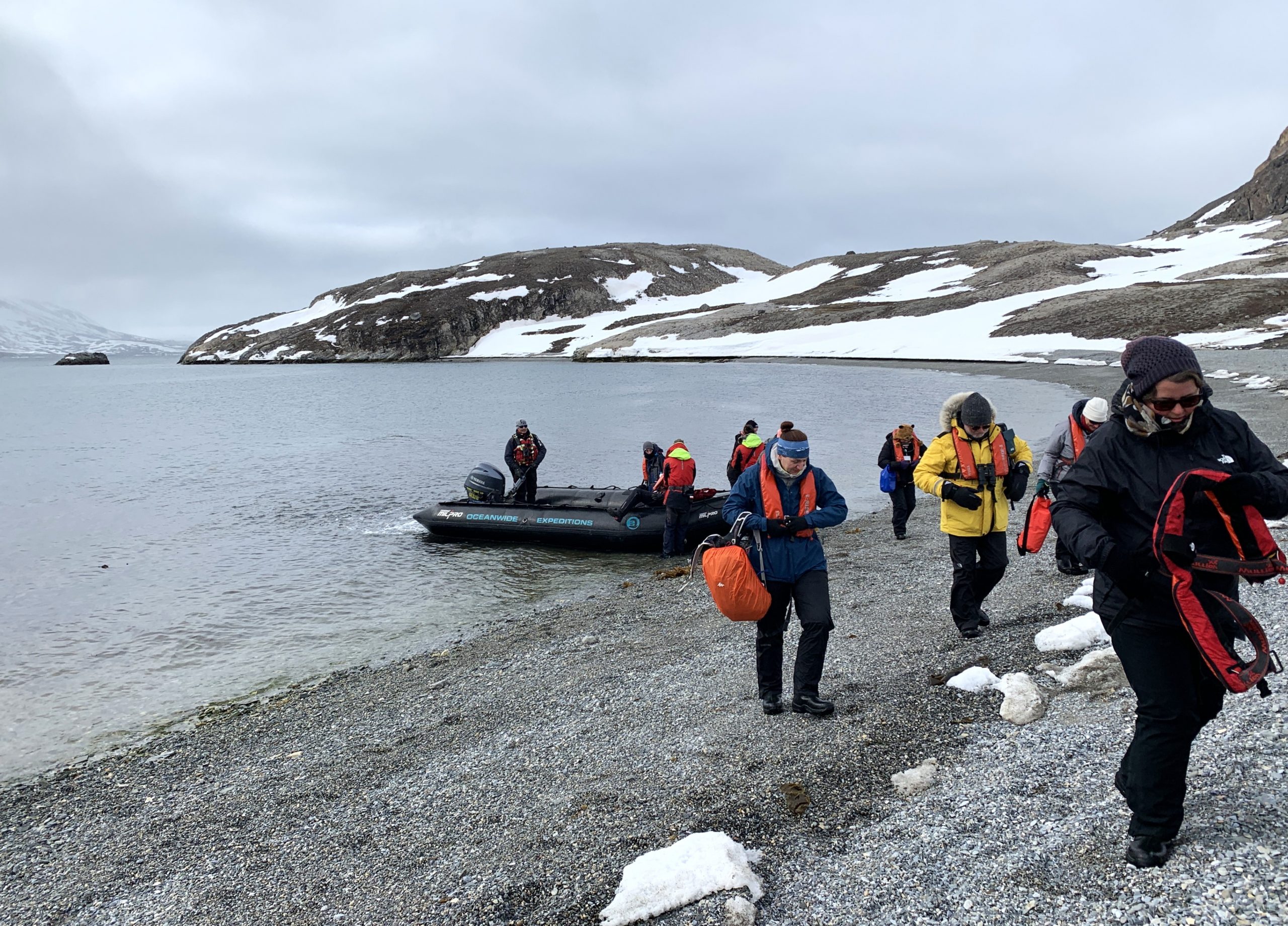
We wander over granular snow and squooshy tundra. Because of the permafrost, the water from the melted upper layer does not seep through and the tundra is wet to walk on. We see boulders left behind by retreating glaciers at the end of the most recent Ice Age.
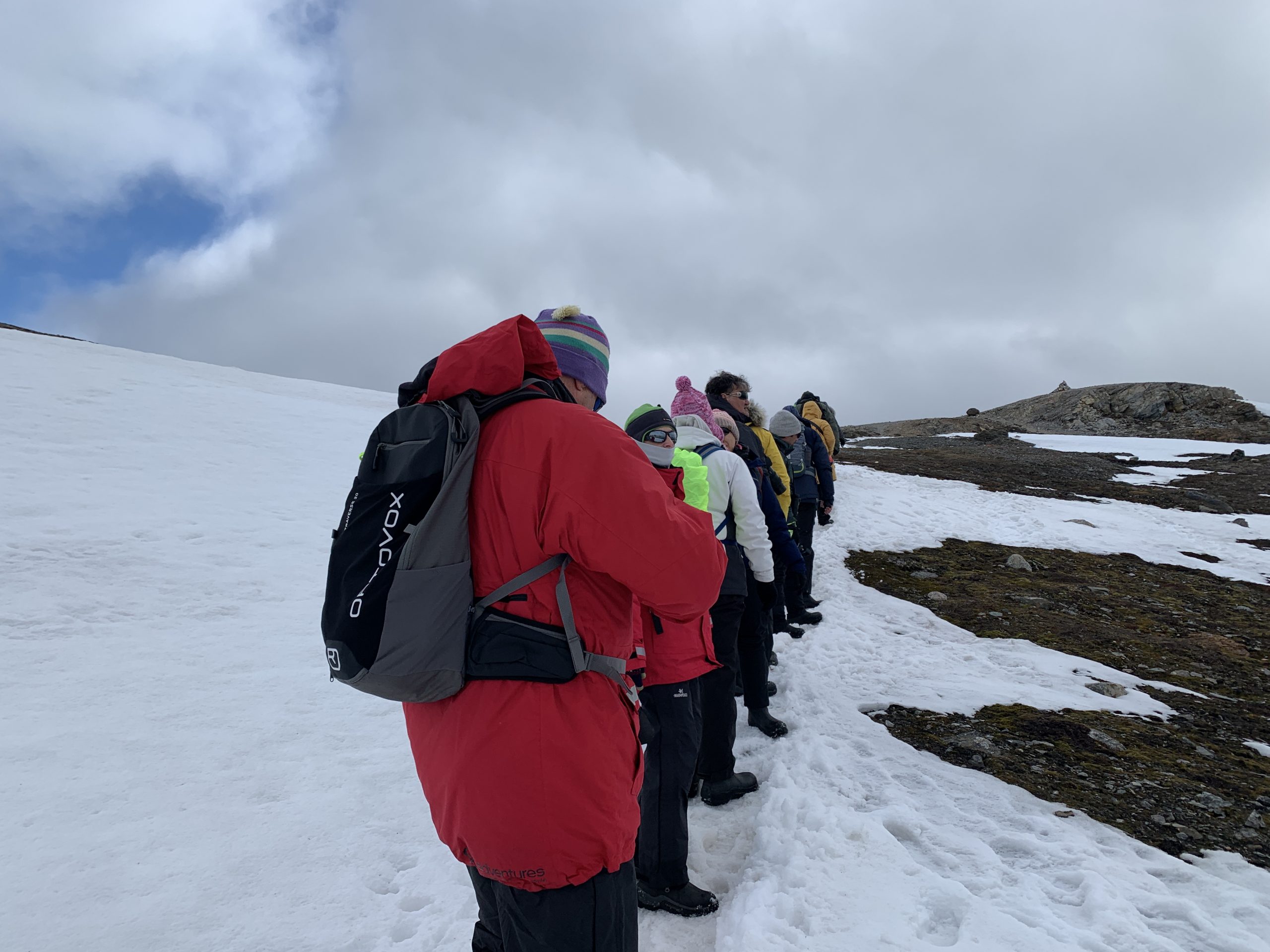
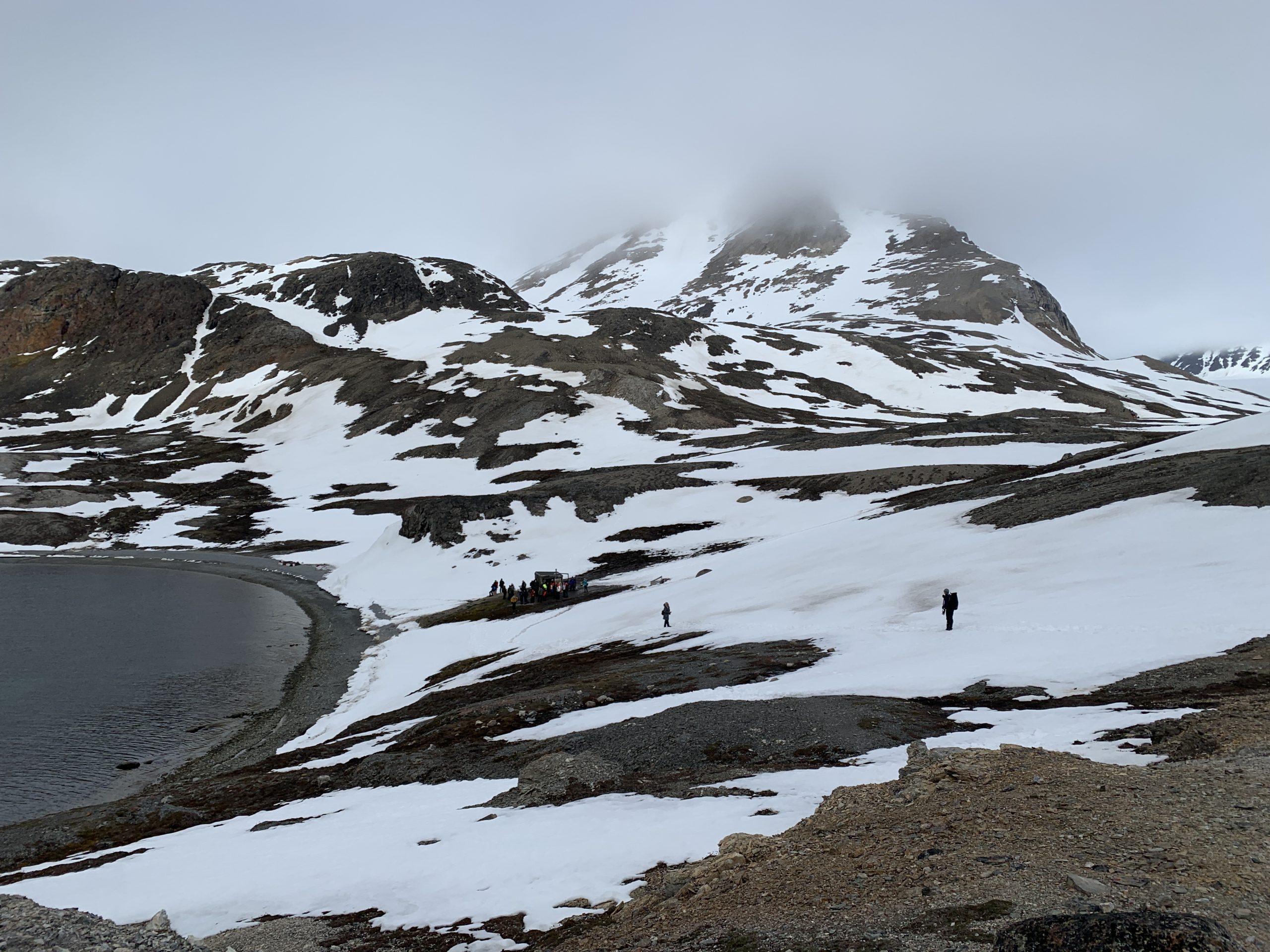
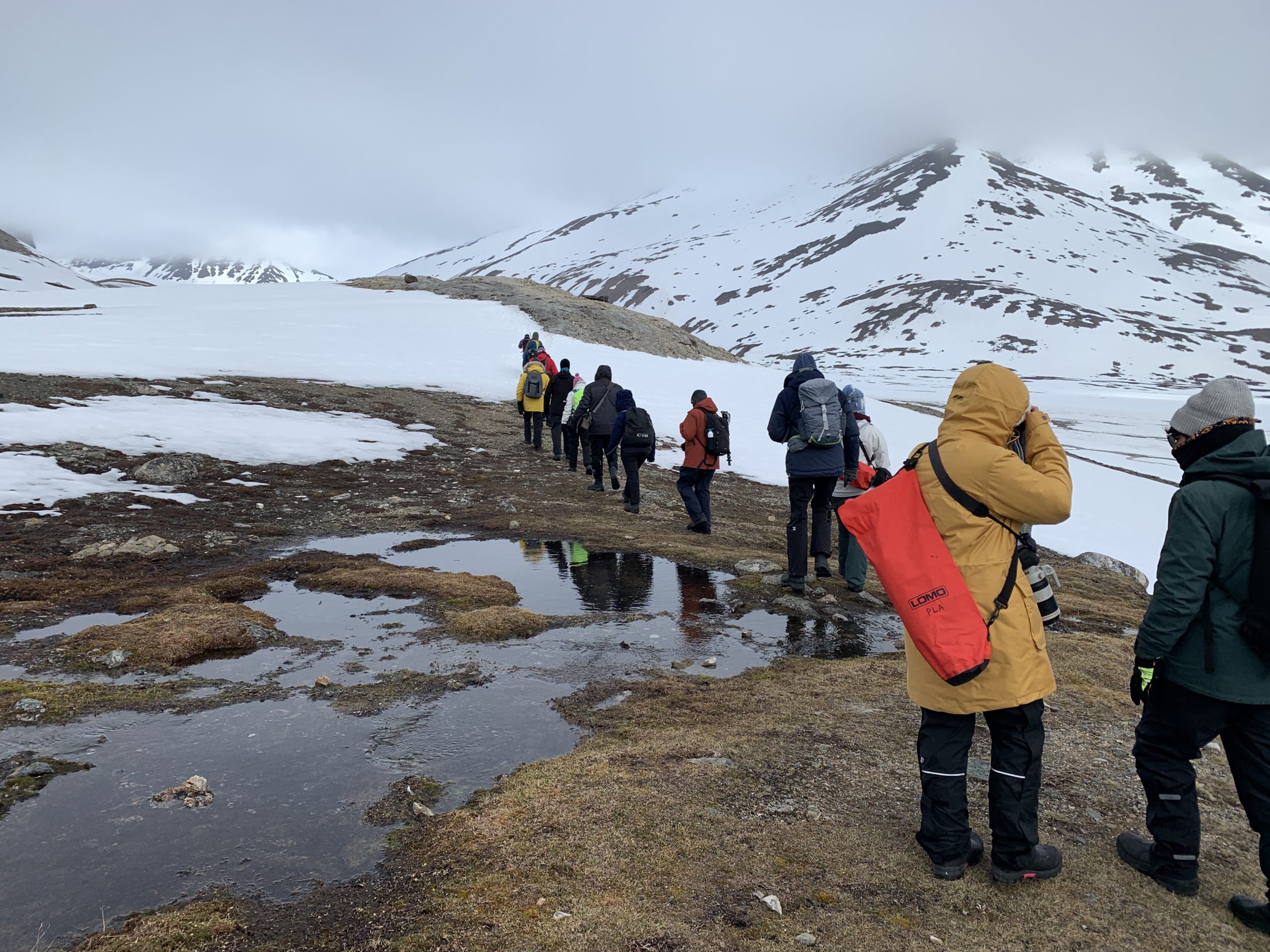
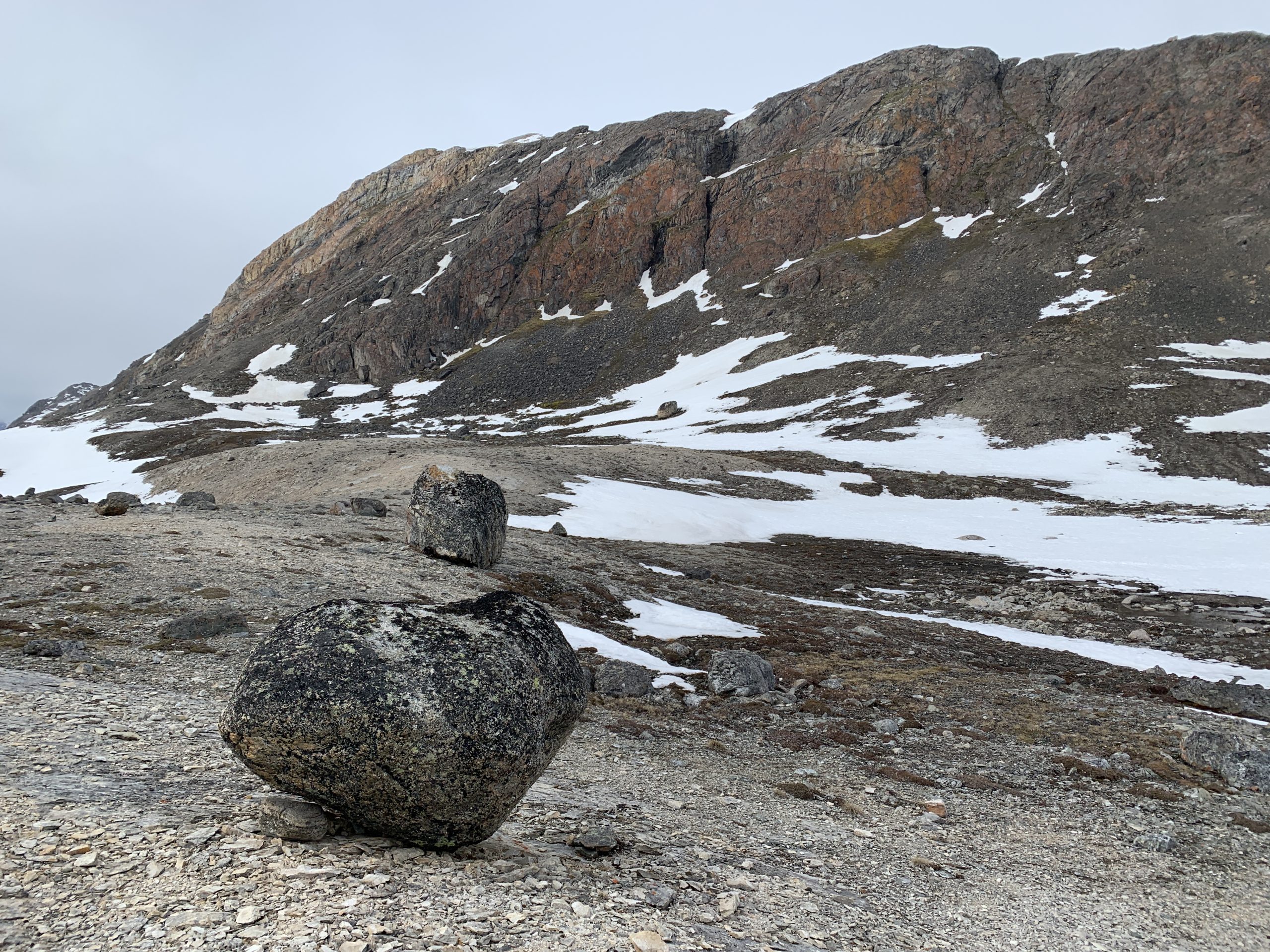
There are lots of fresh reindeer droppings here and there, old polar bear footprints at the edge of a glacier (I would be very nervous if they were fresh, despite the fact that our guides are armed), and recent fox footprints. Bones attest to the fact that animals die and are eaten by other animals. These bones are presumably from a seal.


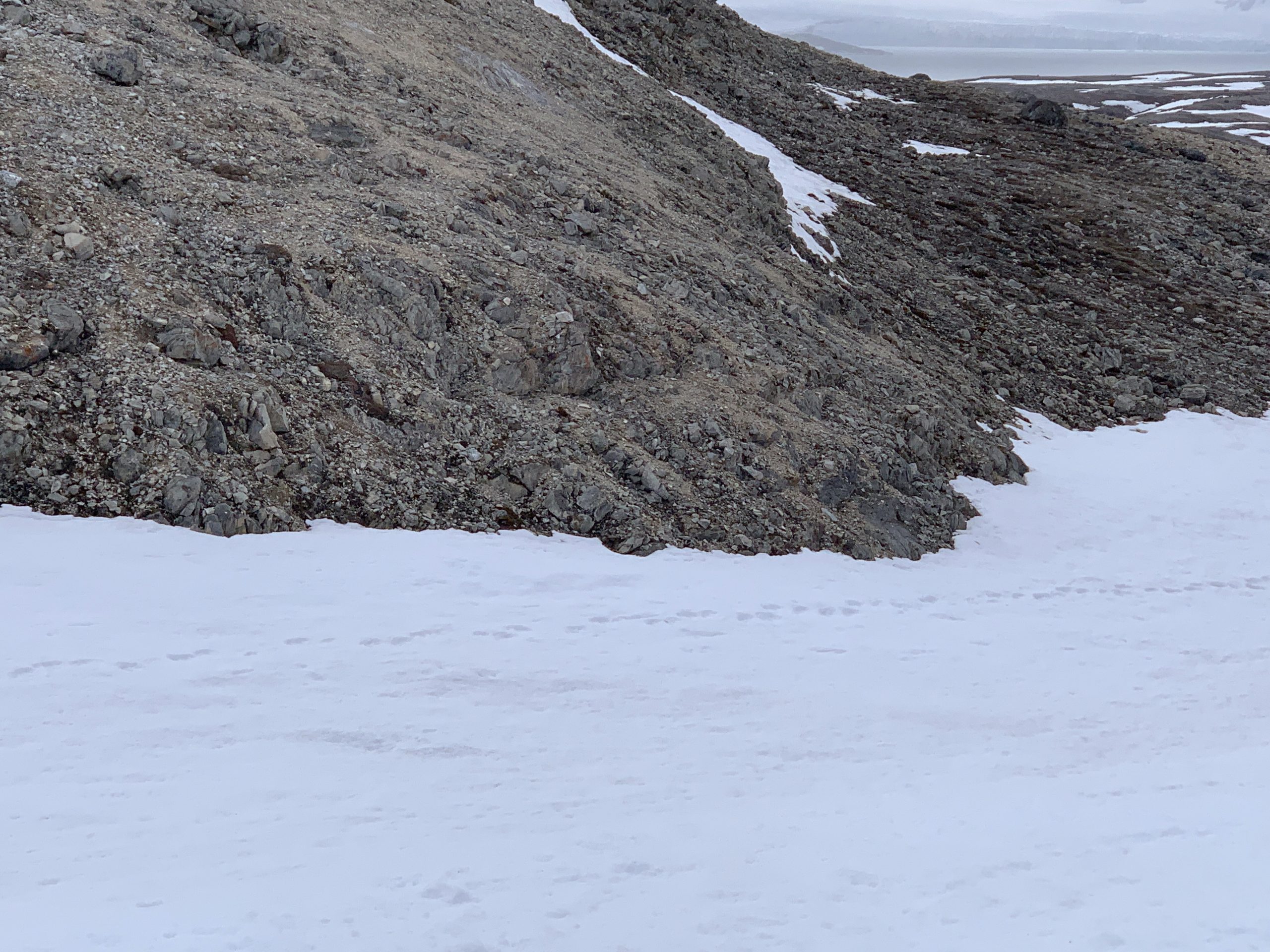

An Arctic skua sits on its rocky nest, guarding its eggs. A white-fronted goose looks askance at us before alighting.

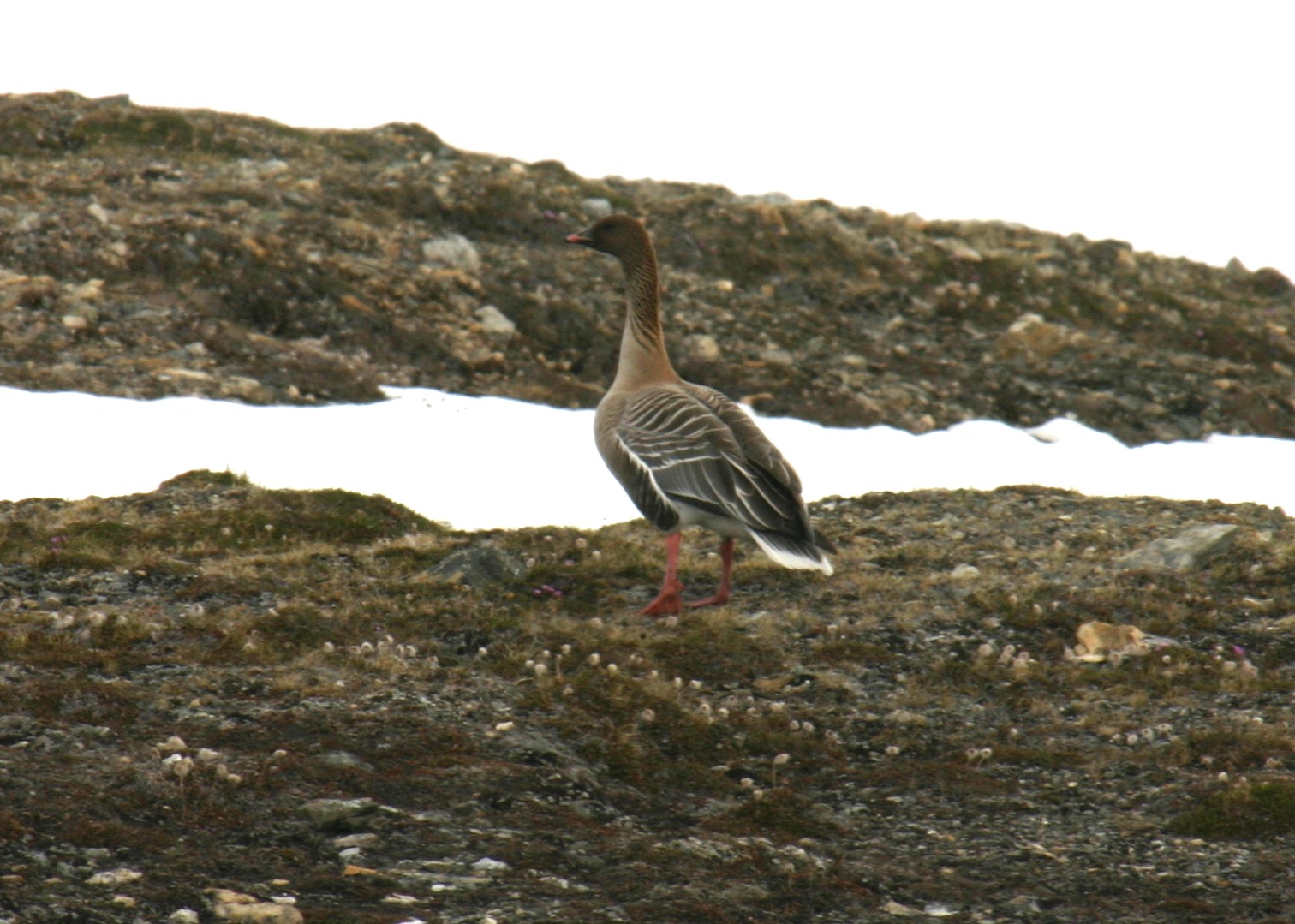
Amazingly, a few plants find a toehold in this barren landscape. The spring is late this year, so the only flowering plants we see are the pretty little purple saxifrage. Their colour contrasts with the grey and black stones that are decorated with various shades of lichen. There are an incredible 742 species of lichen in Svalbard.
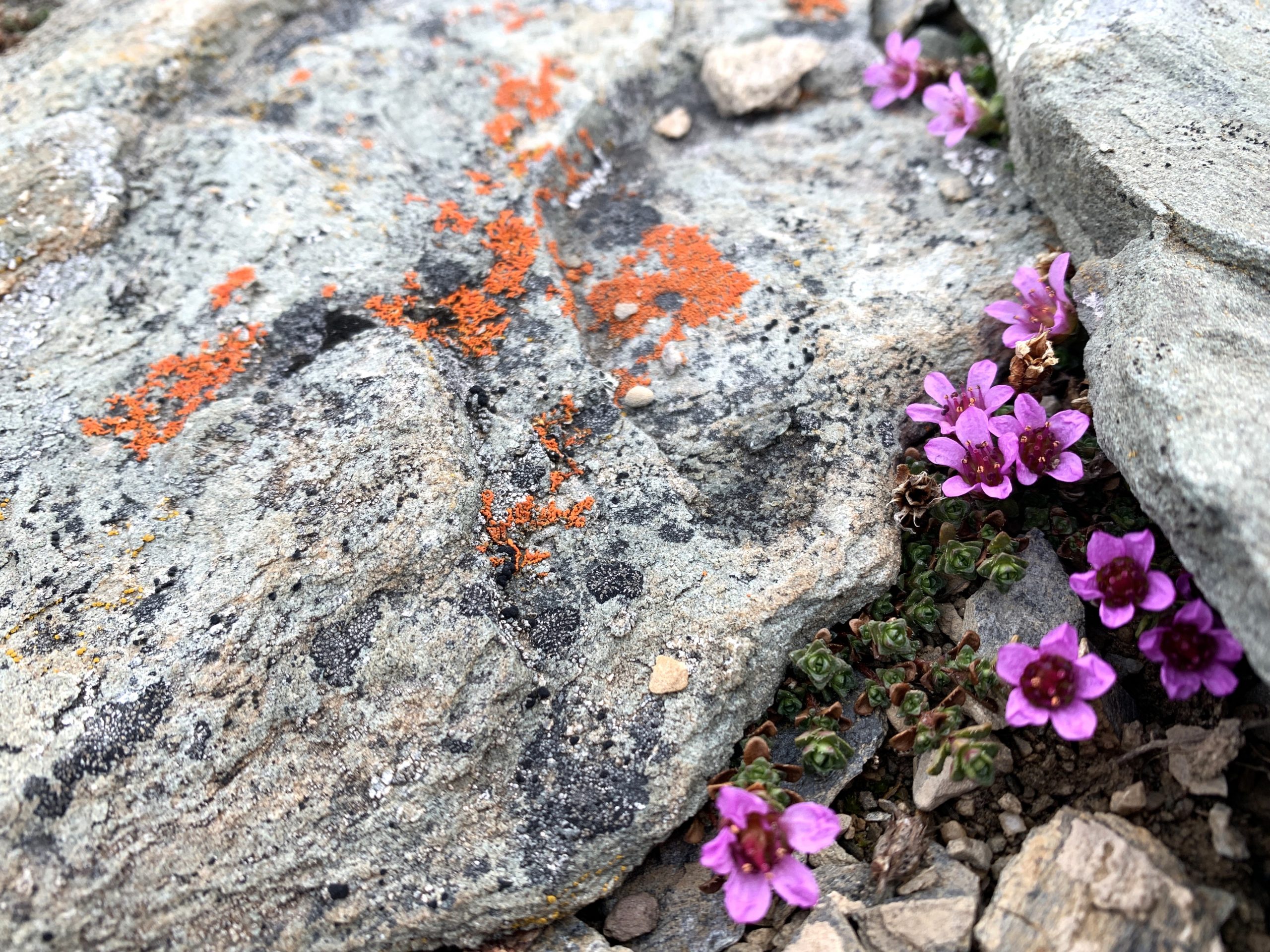
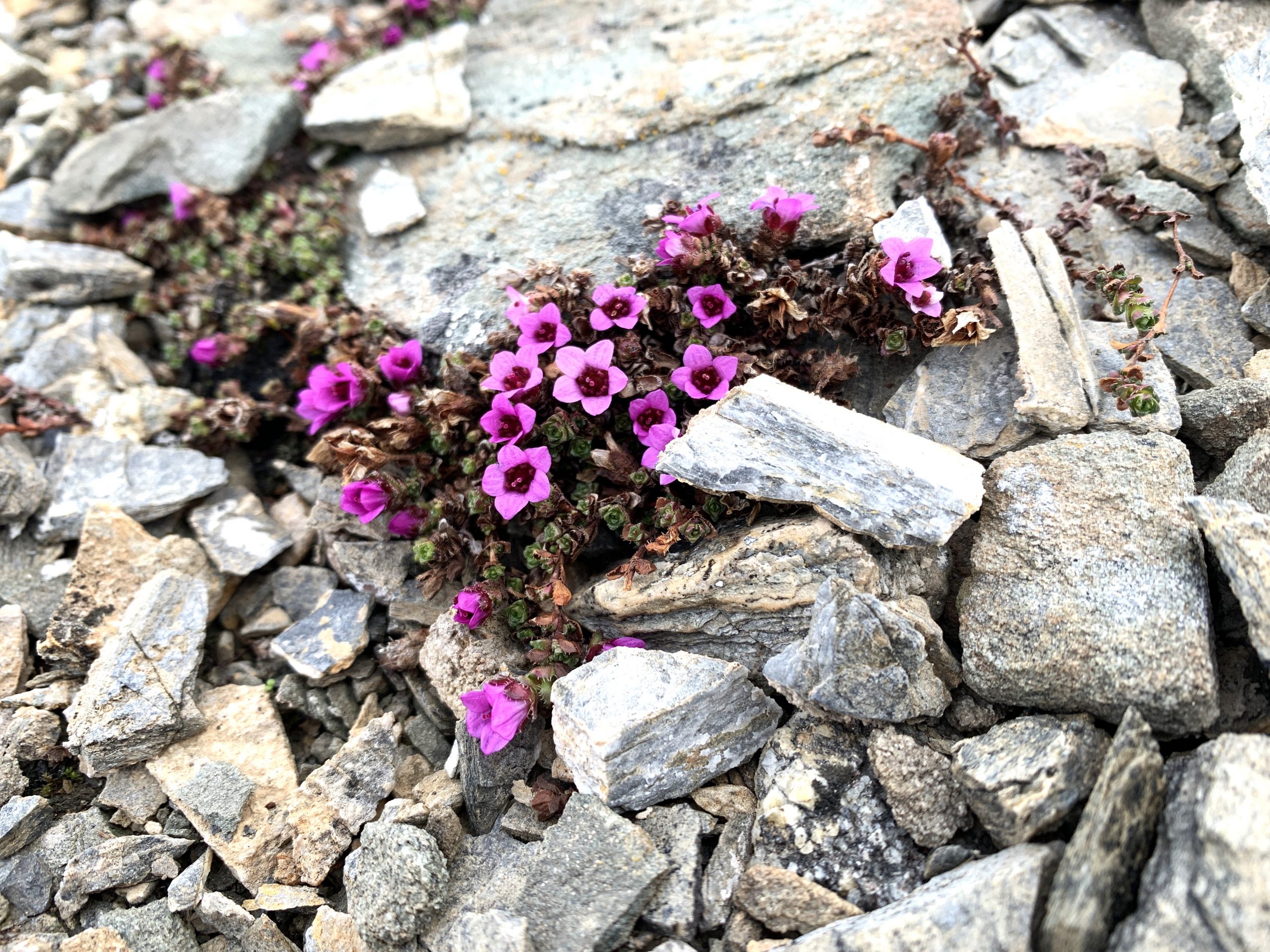
There are no plants that grow high here, but there are trees. So-called trees. Our guide points one out to us. To me it looks more like the flattened heather plant I had in my garden after it died.

We visit an old trappers’ hut, which for unknown reasons is called “Texas Bar”. The place is now used by a variety of people, including scientists. The place looks cozy, with room for two, a wood stove, a table, and a separate enclosure for a toilet. In fact, it reminds me a lot of the 12 m2 cabin I had in Nova Scotia. Don’t ask me why there is so much liquor, though!
